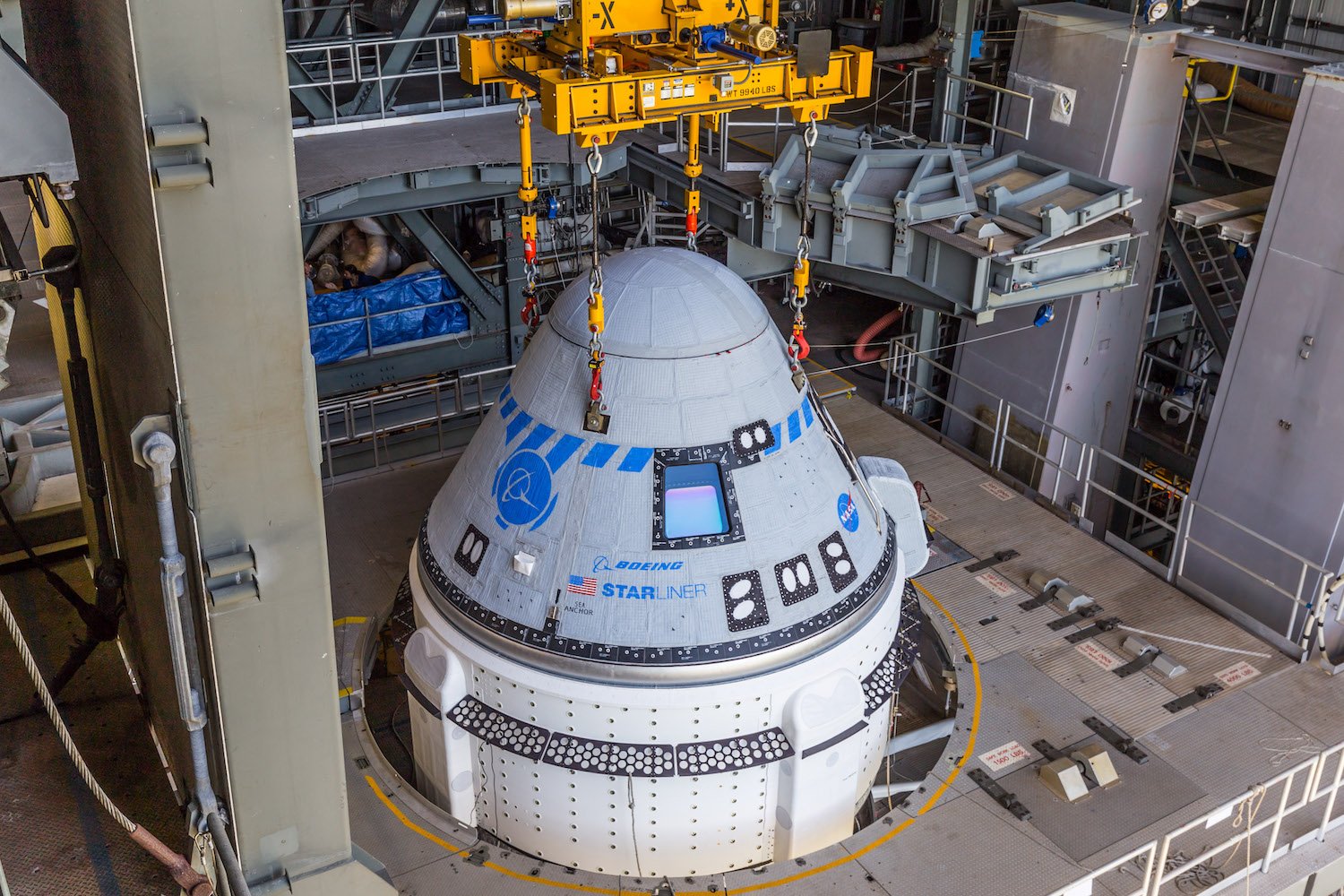Boeing's CST-100 Starliner spacecraft was hoisted atop the United Launch Alliance (ULA) Atlas V rocket today in preparation for the second Orbital Flight Test (OFT-2)which will demonstrate the crew transportation system’s ability to safely carry astronauts to and from the International Space Station for NASA's Commercial Crew Program.
OFT-2 is scheduled for liftoff from Space Launch Complex-41 at Cape Canaveral Space Force Station, Florida, on May 19 at 6:54 p.m. EDT (2254 UTC).
This morning, Starliner traveled from Boeing's Commercial Crew and Cargo Processing Facility (C3PF) at NASA’s Kennedy Space Center to ULA's Vertical Integration Facility (VIF) for connection to the Atlas V.
ULA's motorized payload transporter, adapted to carry Starliner, moved at a top speed of 5 mph, heading from the C3PF, a former space shuttle hangar, eastward to the beach and then southward to the launch site. The transporter deck also provided Starliner with environmental controls to keep its compartments in good health during the transport.
Approaching the VIF, the transporter maneuvered up to the 30-story-tall building's doorway and parked. A four-point lifting sling, called the Handling Fixture Hoist Tool, was connected to the Starliner for the overhead crane to carefully raise the spacecraft onto the Atlas V waiting inside the VIF aboard its mobile launch platform.
Starliner was positioned for mating to the launch vehicle adapter that serves as the spacecraft's cradle on the rocket during ascent. The adapter also features the aeroskirt structure that smooths the air over the combined payload and Atlas V for aerodynamic stability.

Accommodations for Starliner in the VIF include a clean enclosure to enter the capsule's crew module through the hatchway, access stands for technicians to detach the lift sling and complete preflight work to the spacecraft's exterior, power and data transmission umbilicals, and purge and cooling lines.
Next up is the integrated systems test, a tip-to-tail electrical check of the 172-foot-tall (52-meter) Atlas V and Starliner stack.
OFT-2 begins with the 978,924-pound (444,032-kg) Atlas V leaving the launch pad on 1.6 million pounds (7.1 mega-Newtons) of thrust and immediately executing a roll maneuver that puts the crew module is a head's up orientation for the ascent to space.
The powered flight of Atlas V lasts 11 minutes and 54 seconds, accelerating Starliner to 17,475 mph (28,125 kmph). The spacecraft will be deployed at T+plus 14 minutes and 54 seconds on a suborbital trajectory with parameters of 98 by 39 nautical miles (181 by 72 km) at 51.6 degrees relative to the equator.
Employing the same operational procedure as the space shuttle that also launched on suborbital trajectories, the Starliner performs an orbital-maneuvering engine firing about 15 minutes after separation from Centaur to reach a stable orbit.
Starliner's mission will autonomously rendezvous and dock to the space station and then return about five to 10 days later to land in the Western United States. OFT-2 will use the second of Boeing's two reusable spacecraft. The first spacecraft, named Calypso, flew the OFT-1 mission and will be used to launch American astronauts on the Crew Flight Test.

 Back To Blog List
Back To Blog List



